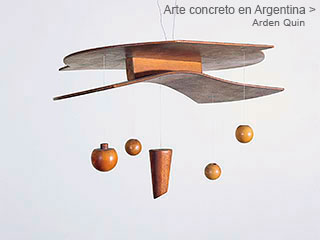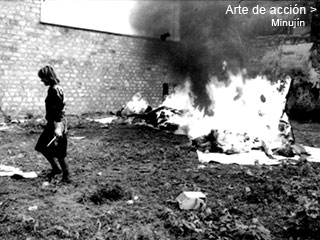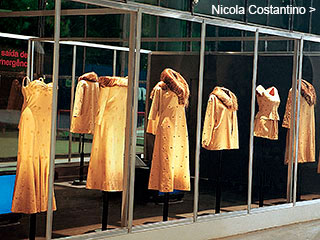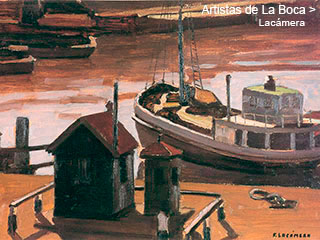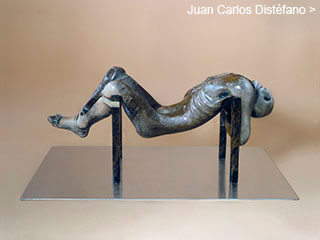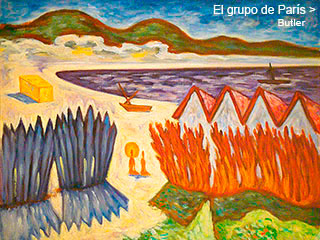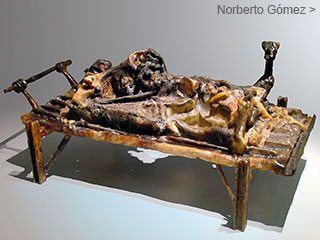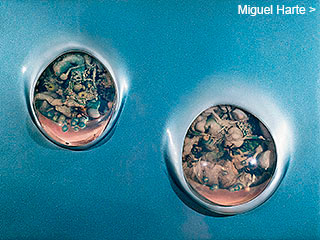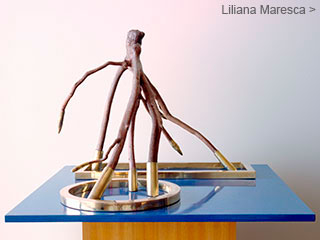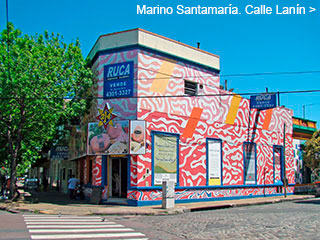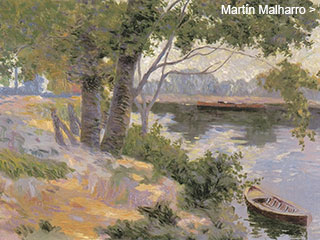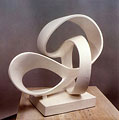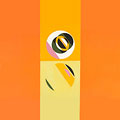Menú
Algunos dossiers
Concrete Art
in Argentina
in Argentina
by
Adriana Lauria
January 2003
January 2003
Abstraction asserted itself in Argentina through the achievements of groups such as Arte Concreto-Invención, Madí and Perceptismo, which developed their activity since the second half of the 1940s. These groups constituted the first organized national avant-garde and made their aesthetics known to the public through exhibitions, magazines, manifestoes, leaflets, lectures, etc.
Spreading and consolidation
After the break of Madí, their members continued to exhibit separately on both sides of the Río de la Plata. Between 1947 and 1949, though, a series of exhibits followed one another, including not only Madí artists but also artists from the Arte Concreto-Invención Association and abstract independent artists. There was the idea of integrating a more comprehensive Abstract movement, putting aside the aesthetical divergences in order to help the tendency’s success like the European groupings Abstraction-Création, Koncret Kunst or the Salon des Réalités Nouvelles.
Therefore in 1947 they organized the exhibition Arte Nuevo (New Art) at the Salón Kraft, where fifty five artists took part, including Julián Althabe, Arden Quin, Ignacio y Martín Blaszko, Yente (appearing here as Eugenia Crenovich), Del Prete, Pablo Edelstein, Girola, Hlito, Kosice, Diyi Laañ, Maldonado, Melé, Primaldo Mónaco, Molenberg, Alfredo Portillos, Prati, Salvador Presta, Souza, Vardanega and Villalba.
Next year, in three rooms of Galería Van Riel took place the Salón de Nuevas Realidades (New Actualities Salon). The title, a translation from the French association, conveyed the wish to play a part in the international Abstract movement. The exhibitors were grouped: Espinosa, Girola, Hlito, Iommi, Maldonado, Melé, Molenberg, Prati, Sousa, Vardanega and Villalba represented Arte Concreto-Invención; Arden Quin, Blaszko and Rothfuss stood for Madí; the independents featured Del Prete, Forte and Yente among others. The Italian architecture studio Rogers-Belgiojoso-Peresutti joined in through photographs of their projects.
In the course of the Salon, Ernesto Rogers, director of Domus, a noteworthy architecture and design publication, presented his lecture “Position of the Concrete Art”. The text of it was recorded in the first issue of Ciclo, a magazine designed by Maldonado. Rogers himself contacted the latter with Max Bill, whom Maldonado kept in touch with when he travelled to Europe, as well as with the artists Georges Vantongerloo, Friedrich Vordemberge-Gildewart and Richard Lohse. He also connected with modern architects and designers in an itinerary that derived, by request of Max Bill, in his incorporation to the Ulm school of design and the refraining from the pictorial activity. Previously, in 1951, Maldonado began to publish in Buenos Aires, together with Alfredo Hlito and the architect Carlos Méndez Mosquera, the “visual culture magazine” Nueva Visión, the ninth and last number of which issued in 1957. 
In 1949, the Salón de Nuevas Realidades was held again at Van Riel. A printed folder refers to it as 2º Salón Argentino de arte no-figurativo. Abstracto, concreto, Madí-Madinemsor (2nd. Argentine Salon of Non-figurative Art. Abstact, Concrete, Madí-Madinemsor). There exhibited: Arden Quin, Biedma, Blaszko, Bresler, Del Prete, Eitler, Fedullo, Hlito, Iommi, Kosice, Laañ, Maldonado, Prati, Rothfuss, Sousa, Villalba, Wainstein and Yente.
The 50s were years of consolidation for the Abstract streaming in Argentina: groups, exhibitions and followers proliferated. Certain strictly geometric styles were gradually disturbed with freer expressions, aiming to bring in again the “pictorial”. A sample of that is the painting performed at that time by José Antonio Fernández Muro, Sarah Grilo, Miguel Ocampo and Hans Aebi. These, together with Maldonado, Iommi, Hlito and Prati, were members of Artistas Modernos de la Argentina (Modern Artists of Argentina), a group the critic Aldo Pellegrini had urged to form with the intention of endowing the country’s most advanced art with an international projection.
Founded by Pellegrini and Arden Quin, alongside other Abstract artists such as Althabe, Blaszko, Eduardo Jonquières, Luis Tomasello, Vardanega and Villalba, the Asociación Arte Nuevo (New Art Association) organizeed in 1955 its first salon. The goals of this association were the research and spreading of modern art, for which it frequently organized Abstract art exhibits. Until 1958, It also issued a bulletin on a regular basis. Their salons took place down to 1961, year in which the Informalist works, a trend that had been edging in since 1958, prevailed.


